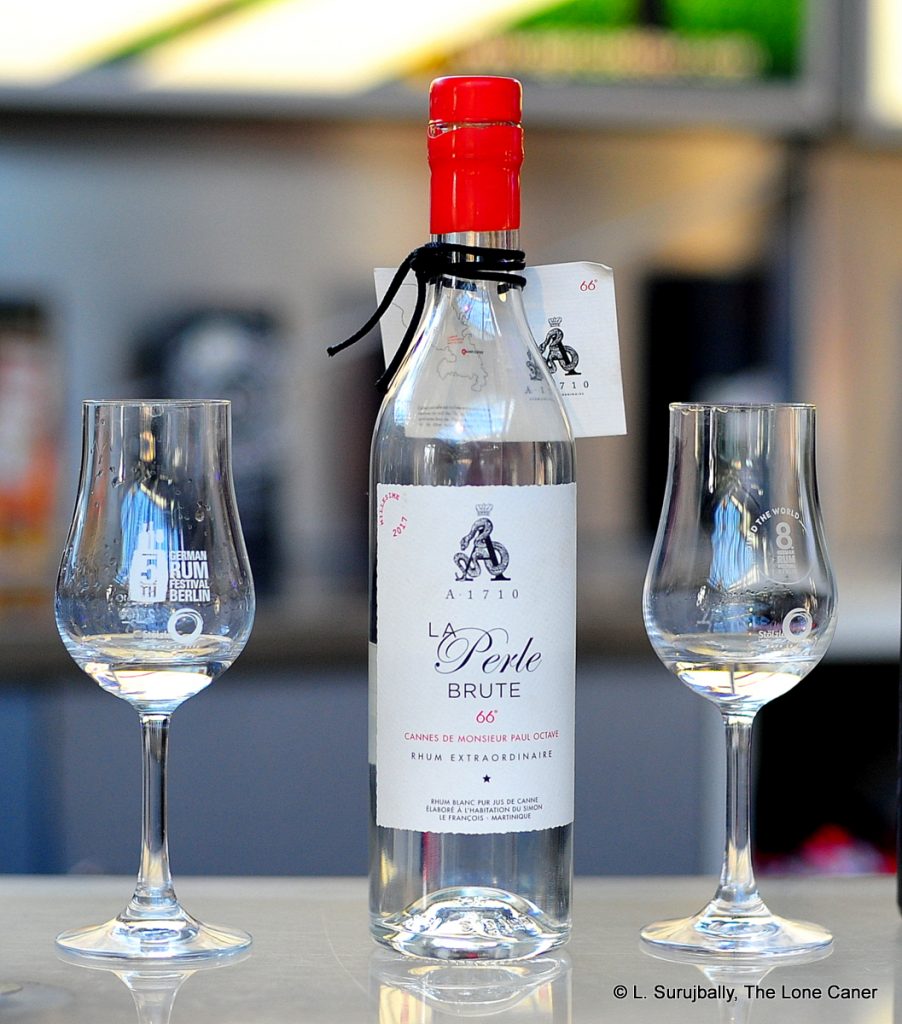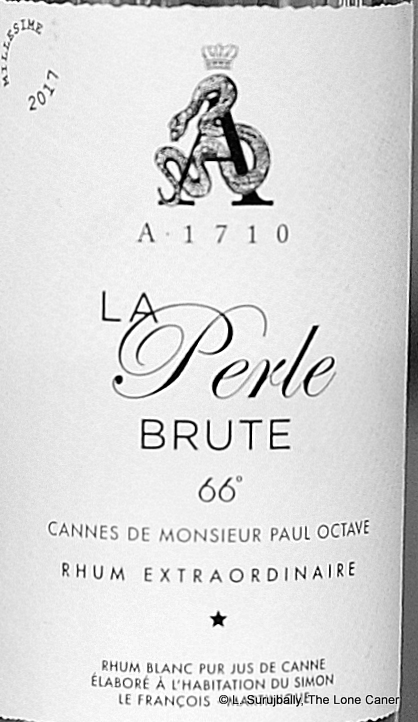
It doesn’t say so, but A1710’s rhum “Brute,” stuffed into a bottle at a rip snorting 66%, is another example of a mini-terroire called a parcellaire – a single small section of an estate, like, oh the UF30E or the similar A1710 54.5% edition that was also issued in the year this was, 2017. There are a few of these micro-terroire rhums floating around and while still uncommon, do show an interesting new direction for the rum world. Though, for obvious reasons I don’t see them as becoming mass market products any time soon – more like exactingly made small batch artisanal rhums in the true sense, marketed to enthusiasts and connoisseurs.
To do that, however, depends on more than just slick marketing. The product actually has to taste good, be seen as out of the ordinary, and be able to showcase some small aspect of its company’s ethos and desire for quality. It’s got to be special. So far, I’ve seen nothing from A1710 that would do anything except lend support to that thesis, because the “Brute” is definitely one of the best white rhums around, even at that formidable strength.
The canes used to make this rum all come from a single plot cultivated by a Mr. Paul Octave, with several varietals: black cane, yellow cane and Pen Epi Lèt. (More delicate and less robust than the hybrids which are cultivated for large-scale productions, these three types of canes are supposedly quite juicy). The cane juice is fermented for around five days, run through a creole 7-plate copper column still affectionately named “La Belle Aline”, is non-AOC compliant, and as far as I know, rested for some time but not aged or filtered or reduced in strength, resulting in 2,286 bottles of a 66% beefcake for the 2017 edition, all individually numbered.
 The results of all that micro-management are amazing.The nose, fierce and hot, lunges out of the bottle right away, hardly needs resting, and is immediately redolent of brine, olives, sugar water,and wax, combined with lemony botes (love those), the dustiness of cereal and the odd note of sweet green peas smothered in sour cream (go figure). Secondary aromas of fresh cane sap, grass and sweet sugar water mixed with light fruits (pears, guavas, watermelons) soothe the abused nose once it settles down.
The results of all that micro-management are amazing.The nose, fierce and hot, lunges out of the bottle right away, hardly needs resting, and is immediately redolent of brine, olives, sugar water,and wax, combined with lemony botes (love those), the dustiness of cereal and the odd note of sweet green peas smothered in sour cream (go figure). Secondary aromas of fresh cane sap, grass and sweet sugar water mixed with light fruits (pears, guavas, watermelons) soothe the abused nose once it settles down.
It’s the taste that’s the real star of the show, the way this huge strength is tamed and made almost palatable. Yes it’s hot and spicy, but there’s a sort of smooth creaminess to the texture that permits it to be had neat and the high proof almost forgotten. There’s salt and wax and light glue as before, combined with a sweeter note of marshmallows, light white fruits and it’s reminiscent of a watery fruit infusion to be had on a hot day on a tropical beach somewhere. There are other tastes of lychees, flowers, more fruits (heavier ones), cane sap, herbs (mint, perhaps a touch of sage and basil), but these dance around the central tastes and lend support rather than shouldering their way to the forefront, and the entire experience is really quite good, moving smoothly, almost sedately, inro a long, spicy and fruity finish that somehow preserves both strength and delicacy.
I really enjoyed the 54.5% La Perle, and scored it well, but the Brute is a cut even above that. It’s a rum made by one guy on one parcel on one island and has a richness of aroma and flavour that it would seem almost a sin to put it in a barrel. The real money in the rum world is in utra-old rums made by proud houses who reach back in time for barrels left to age for decades by generations past. A1710 have shown that a brand new outfit, not adhering to a production standard of any kind, not even ageing what they come up with and simply releasing a rhum like this almost straight off the still, can provide us with something truly remarkable for an astoundingly affordable price. For me, it’s worth every penny.
(#772)(88/100)
Other notes
Some historical background on A1710 is in the original La Perle review, adapted here:
A1710 was created in 2016 as a micro-distillery for Habitation Le Simon (not to be confused with the distillery of Simon, though they’re neighbors), which rubs shoulders with Clement on the mid eastern side of Martinique. The estate’s roots go back to 1710 when the founder, Jean Assier, arrived on the island (hence the “A” in the title) and founded the sugar plantation, which seems to have been family owned and operated as a sugar estate ever since. Yves Assier de Pompignan, the 50-year-old who created the brand and founded the distillery in 2016, first made a career in stationery and office supplies before accepting his True Calling, perhaps channelling the family heritage — a great-grandfather owned the current factory of Saint-James, a grandfather owned of rum brand, his father is a cane agronomist and he has connections with the Hayot family as well.